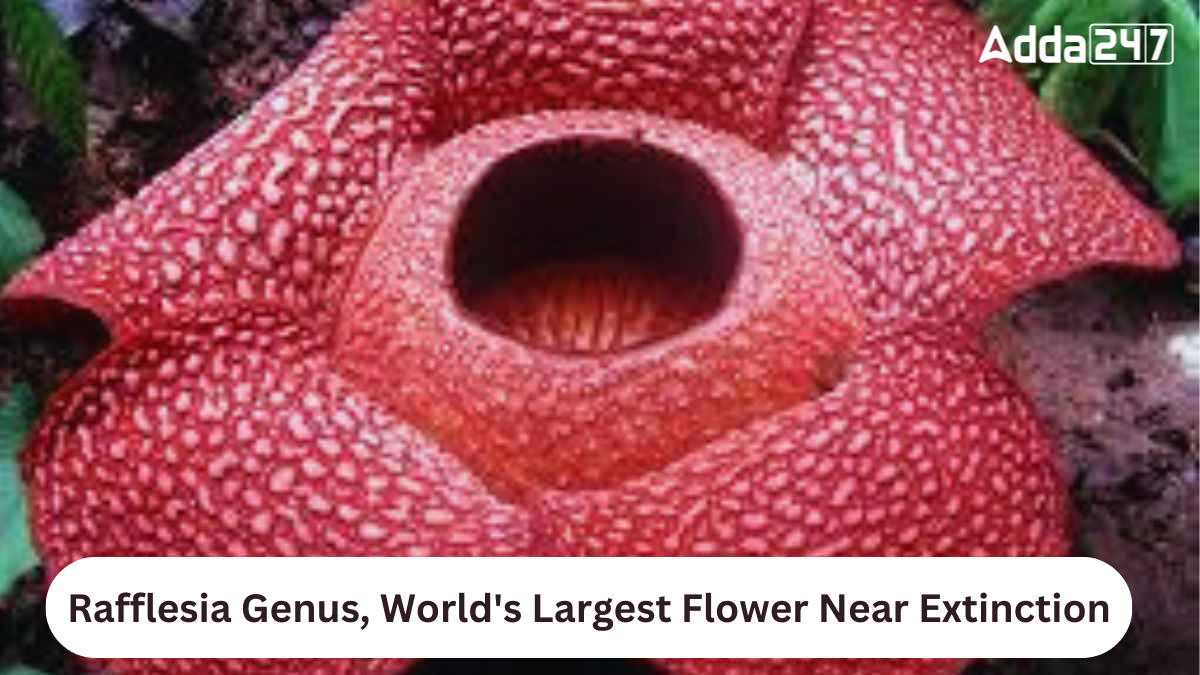An international group of scientists, including botanists from the University of Oxford’s Botanic Garden, has issued a dire call to action to save the iconic genus Rafflesia. These remarkable plants, known for their massive, foul-smelling flowers, are under severe threat due to habitat destruction and lack of protection. A recent study has shed light on the precarious status of Rafflesia, urging immediate conservation efforts to prevent their extinction.
The Mystery of Rafflesia, World’s Largest Flower
Rafflesia, often referred to as the “corpse flower,” is a botanical enigma that has fascinated scientists for centuries. It is a parasitic plant that infects tropical vines in the jungles of Southeast Asia. For most of its life, Rafflesia remains hidden as a system of thread-like filaments within its host plant. However, at unpredictable intervals, it produces a massive, five-lobed flower, measuring up to a meter in width. This flower emits a putrid scent resembling rotting meat to attract pollinating files.
The Race against Extinction
While Rafflesia has long been an object of fascination, it is now facing an existential threat. The primary danger lies in the destruction of its natural habitat. The forests of South-East Asia are being rapidly cleared for agriculture, logging and urban development, leaving the Rafflesia species with fewer places to call home. As a result, these plants are under grave peril.
Of the 42 known species of Rafflesia, 25 are classified as critically endangered and 15 are endangered. Shockingly, more than two-thirds of these species receive no protection from current conservation strategies. This relevant comes from the first-ever global assessment of the threats facing these remarkable plants.
A Call for Urgent Action
Dr. Chris Thorogood, an author of the study from the University of Oxford Botanic Garden, emphasizes the urgency of the situation. He points out that the conservation efforts for these iconic plants have lagged behind those for animals. To safeguard these extraordinary flowers, a collaborative, cross-regional approach is imperative.
Key Actions to Save Rafflesia from Extinction
The study calls for several key actions to save Rafflesia from extinction:
- Habitat Protection: Efforts must be made to protect and preserve the natural habitats where Rafflesia thrives. Halting deforestations and illegal logging is crucial to secure their future.
- Species Understanding: As many Rafflesia species remain poorly understood, research efforts must be intensified to gain insights into their ecology, biology and distribution.
- Propagation Methods: Developing effective propagation techniques in botanic gardens is essential to ensure the survival of these species outside their natural habitats.
- Community Engagement: Encouraging ecotourism can provide local communities with incentives to protect Rafflesia. Indigenous peoples, with their deep connection to the forests, can play a vital role in conservation efforts.
- IUCN Red List: Researchers are advocating for the inclusion of all Rafflesia species on the IUCN Red List of threatened species to raise awareness and garner international support.





 Which City is known as the City of Bambo...
Which City is known as the City of Bambo...
 Who was the First Prime Minister of Indi...
Who was the First Prime Minister of Indi...







